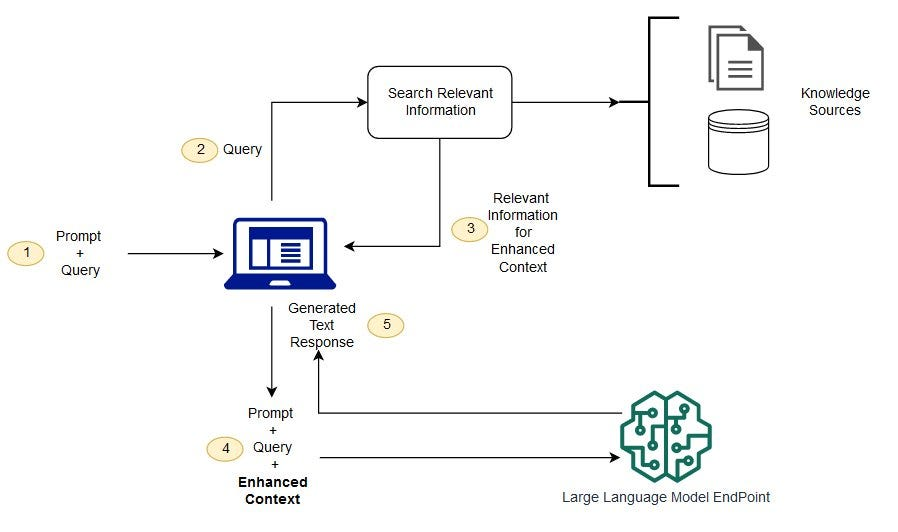- Published on
Unlocking the Power of Large Language Models Using LangChain for Enhanced Context Management
- Authors

- Name
- Adil ABBADI
Introduction
Large Language Models (LLMs) have taken the world of Natural Language Processing (NLP) by storm, demonstrating exceptional capabilities in generating human-like text and responding to complex queries. However, as LLMs grow in size and complexity, managing context becomes an increasingly daunting task. This is where LangChain comes into play – a novel framework designed to optimize context management for LLMs, ensuring more accurate and informative responses.

- Understanding the Context Management Challenge in LLMs
- Introducing LangChain: A Novel Framework for Context Management
- Real-World Applications of LangChain
- Conclusion
- Take the Next Step with LangChain
Understanding the Context Management Challenge in LLMs
One of the significant limitations of traditional LLMs is their inability to effectively manage context across multiple interactions. As conversations grow longer, LLMs struggle to keep track of previous responses, leading to inconsistencies and inaccuracies. This is primarily due to the fixed-length input sequences used in most LLM architectures, making it difficult for the model to capture long-range dependencies.
Introducing LangChain: A Novel Framework for Context Management
LangChain is a promising solution that tackles the context management challenge in LLMs. By introducing a chain-like structure to represent context, LangChain enables LLMs to better capture and utilize contextual information. This is achieved through a combination of techniques, including:
1. Hierarchical Context Representation
LangChain represents context as a hierarchical structure, where each node corresponds to a specific interaction or response. This allows the model to capture complex relationships between different pieces of context, enabling more accurate and informed responses.
import langchain
# Create a LangChain instance
chain = langchain.LangChain()
# Add nodes to the chain, representing different interactions
node1 = chain.add_node("User: What is the capital of France?")
node2 = chain.add_node("Assistant: The capital of France is Paris.")
node3 = chain.add_node("User: What is the population of Paris?")
# Use the chain to generate a response
response = chain.generate_response(node3)
print(response) # Output: The population of Paris is approximately 2.1 million.
2. Attention-based Context Weighting
LangChain employs an attention mechanism to weigh the importance of different contextual nodes. This allows the model to focus on the most relevant pieces of context when generating responses, reducing the impact of noisy or irrelevant information.

3. Incremental Context Updating
LangChain's incremental context updating mechanism enables the model to dynamically update the context chain as new interactions occur. This ensures that the model remains up-to-date and can respond accurately to changing contextual information.
# Update the context chain with new information
chain.update_node(node3, "User: What is the latest population estimate for Paris?")
# Generate a response based on the updated context
response = chain.generate_response(node3)
print(response) # Output: According to recent estimates, the population of Paris is approximately 2.2 million.
Real-World Applications of LangChain
The benefits of LangChain extend far beyond conversational AI. This technology has the potential to revolutionize various industries, including:
1. Customer Service Chatbots
LangChain can significantly improve the accuracy and responsiveness of customer service chatbots, enabling them to better understand and address customer concerns.
2. Language Translation Systems
By incorporating LangChain, language translation systems can better capture contextual nuances, resulting in more accurate and informative translations.
3. Content Generation and Summarization
LangChain can be used to generate more informative and accurate content summaries, taking into account complex contextual relationships.
Conclusion
LangChain represents a significant breakthrough in context management for Large Language Models. By harnessing the power of hierarchical context representation, attention-based context weighting, and incremental context updating, LangChain enables LLMs to generate more accurate and informative responses. As the NLP landscape continues to evolve, the potential applications of LangChain are vast and exciting. Join the conversation and explore the possibilities of LangChain for yourself.
Take the Next Step with LangChain
Ready to unlock the full potential of LangChain? Start exploring the LangChain documentation and implementation guides to integrate this powerful technology into your NLP projects.
